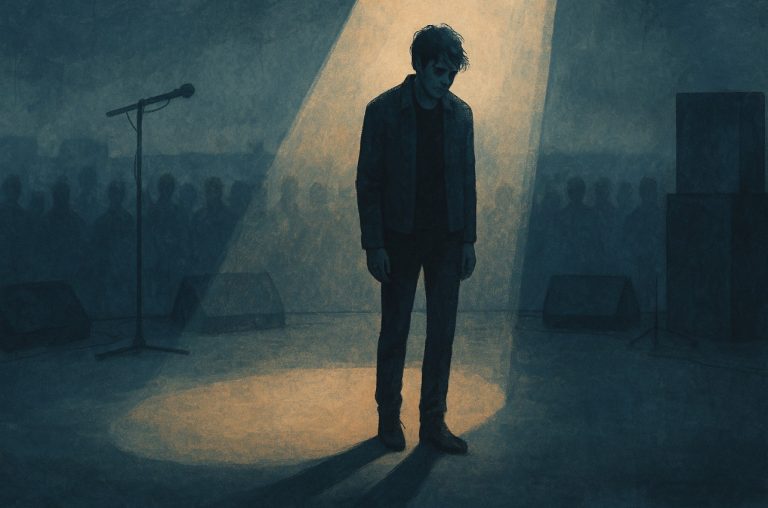What Led to Breast Cancer Being Nicknamed “Nun’s Disease”?
The term “nun’s disease” was coined following early observations in the 18th century, when Italian physician Bernardino Ramazzini reported a higher incidence of breast cancer among nuns compared to women in other roles. This pattern intrigued medical scholars of the time, who speculated about its cause.
Ramazzini hypothesised that celibacy and the absence of childbirth might be contributing factors, as these were defining aspects of a nun’s lifestyle. Since nuns traditionally abstain from marriage and childbearing, researchers began exploring whether reproductive inactivity influenced cancer risk.
This early theory was significant not because it identified a direct cause, but because it initiated the broader medical investigation into reproductive health and cancer, a field that continues to evolve today.
Does Celibacy Cause Breast Cancer?

In short, no celibacy does not cause breast cancer. Modern medical research has conclusively shown that there is no direct causal link between abstaining from sex and the development of breast cancer.
What earlier observations misunderstood was the difference between correlation and causation.
Nuns did show higher rates of breast cancer, but not because of celibacy itself. Instead, the issue lies with reproductive history, which influences hormonal exposure over a lifetime.
Important reproductive risk factors identified by researchers include:
- Age at first menstruation
- Age at first pregnancy (if any)
- Number of full-term pregnancies
- Breastfeeding duration (or absence)
- Total number of menstrual cycles in a lifetime
These factors affect the amount of oestrogen exposure, which plays a key role in breast cell activity and, consequently, cancer risk.
Nuns, due to lifelong celibacy, often never experience pregnancy or breastfeeding, and therefore remain exposed to more uninterrupted hormonal cycling than women who go through these reproductive events.
Are Nuns Uniquely at Risk of Breast Cancer Today?
Although early medical opinions implied that nuns were somehow more prone to the disease, this is now considered a misconception.
Nuns are not uniquely vulnerable to breast cancer they simply fit a particular risk profile common to many women.
What’s relevant today is not someone’s vocation, but their individual hormonal history, genetic predisposition, and lifestyle habits.
In fact, any woman who has not had children or breastfed, regardless of religious affiliation or marital status, may share similar risk characteristics.
Modern studies emphasise that the real risk is influenced by:
| Risk Factor | Explanation |
| Nulliparity (never giving birth) | Increases lifetime hormone exposure |
| Lack of breastfeeding | Removes a protective factor against breast cancer |
| Early menstruation | Extends hormonal activity over time |
| Late menopause | Lengthens oestrogen exposure |
| Hormone replacement therapy | Can raise hormone-sensitive cancer risk |
| Genetics | BRCA1/BRCA2 mutations significantly raise risk |
| Lifestyle | Obesity, alcohol, inactivity, and poor diet are key factors |
As such, nuns are not inherently at risk, but their traditional lifestyle inadvertently aligned with several biological risk indicators.
Why Is the Term “Nun’s Disease” Considered Outdated Today?

The label “nun’s disease” has been dismissed by modern medicine for being both inaccurate and stigmatising. While it may have served as a shorthand during early medical investigations, it oversimplified a much more complex biological issue.
Modern breast cancer research has made significant advances, with key developments including:
- Recognition of genetic mutations like BRCA1 and BRCA2
- Awareness of environmental toxins and pollutants
- The role of obesity and diet in cancer progression
- Improvements in screening technology, such as mammography
- Ongoing development of targeted therapies and treatments
Contemporary researchers and oncologists prefer to focus on evidence-based risk assessment and preventive care rather than antiquated terms that may wrongly imply blame or biological determinism.
In essence, the term “nun’s disease” is no longer scientifically relevant. It remains only as a historical reference, a reminder of how far the medical community has come in understanding cancer through rigorous research and compassionate care.
FAQs
Who first observed the link between nuns and breast cancer?
Italian physician Bernardino Ramazzini in the 18th century was the first to document this pattern, noting higher breast cancer rates among celibate nuns.
Is breast cancer more common in women who don’t have children?
Yes, research shows that nulliparous women (those who haven’t had children) may face a higher risk due to uninterrupted hormonal exposure.
Does breastfeeding reduce breast cancer risk?
Yes. Breastfeeding is associated with a lower risk of breast cancer as it alters breast cell development and reduces hormonal cycling.
Is celibacy itself harmful to women’s health?
No. Celibacy is not harmful. It’s the absence of reproductive events like pregnancy and breastfeeding that may contribute to slightly increased breast cancer risk.
Why is the term “nun’s disease” problematic?
It inaccurately implies a direct cause-effect relationship and stigmatises a particular group, ignoring the broader biological and lifestyle-based causes.
What are modern risk factors for breast cancer?
Current risk factors include genetics, reproductive history, alcohol use, obesity, sedentary lifestyle, and hormone therapy.
How is breast cancer risk assessed today?
Doctors use family history, genetic testing, lifestyle evaluation, and mammogram results to assess risk more accurately and holistically.
READ NEXT:






